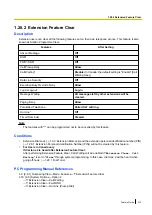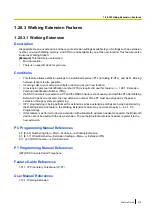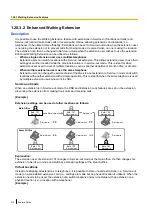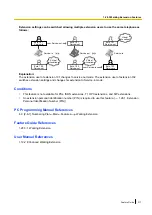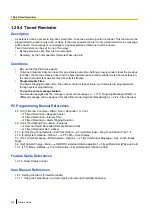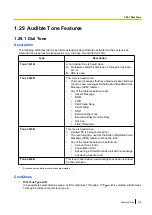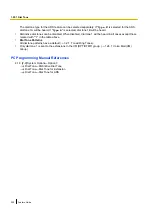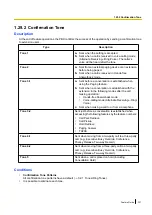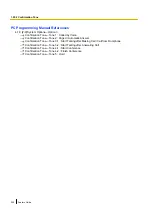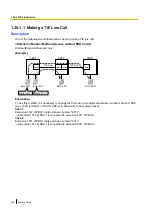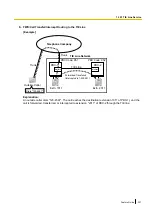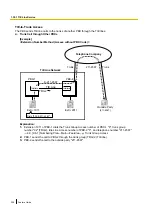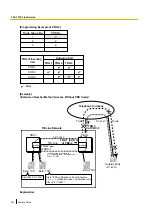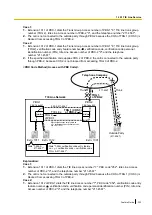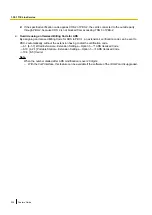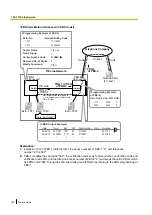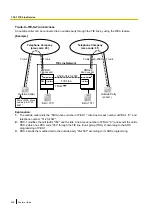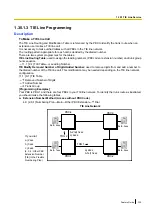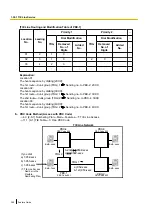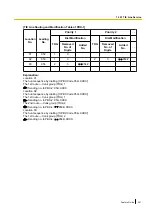
1.30.1.2 TIE Line and Trunk Connection
Description
To connect the TIE line with the trunk, the following patterns are available:
1.
Trunk-to-TIE Access
2.
TIE-to-Trunk Access
3.
Trunk-to-TIE-to-Trunk Access
Trunk-to-TIE Access
It is possible to assign an extension of another PBX as the destination of incoming trunk calls to the own PBX.
It is also possible to forward calls using a virtual PS. Using this method, trunk calls received at PBX-1 are
forwarded directly to the extension at PBX-2, even when using the PBX Code method.
a.
Incoming Trunk Call Destination Assignment
[Example]
PBX-1
TIE Line Network
TIE Line
PBX-2
Extn. 2011
Outside Caller
Trunk
Trunk
Interface
Dials "123-4567".
Telephone Company
Destination: 2011
DID No: 4567
Interface
Extn. 1011
Explanation:
An outside caller dials "123-4567". The call is sent to extension "2011" of PBX-2 through the TIE line
according to the assignment of the DID call destination of PBX-1. (
®
1.1.1.3 Direct Inward Dialling (DID)/
®
DDI / DID Destination—Day, Lunch, Break, Night
®
326
Feature Guide
1.30.1 TIE Line Service
Summary of Contents for KX-NCP500
Page 13: ...Section 1 Call Handling Features Feature Guide 13...
Page 89: ...User Manual References 1 2 1 Basic Calling Feature Guide 89 1 5 4 Trunk Call Features...
Page 169: ...User Manual References 1 4 2 Holding a Call Feature Guide 169 1 13 1 Call Hold...
Page 185: ...1 7 2 Answering Denying a Paging Announcement Feature Guide 185 1 16 1 Paging...
Page 394: ...394 Feature Guide 1 33 1 Cellular Phone Features SUMMARY...
Page 395: ...Section 2 System Configuration and Administration Features Feature Guide 395...
Page 444: ...444 Feature Guide 2 4 6 Packet Internet Groper PING Confirmation...
Page 445: ...Section 3 Appendix Feature Guide 445...
Page 461: ...Index Feature Guide 461...
Page 467: ...Feature Guide 467 Notes...


